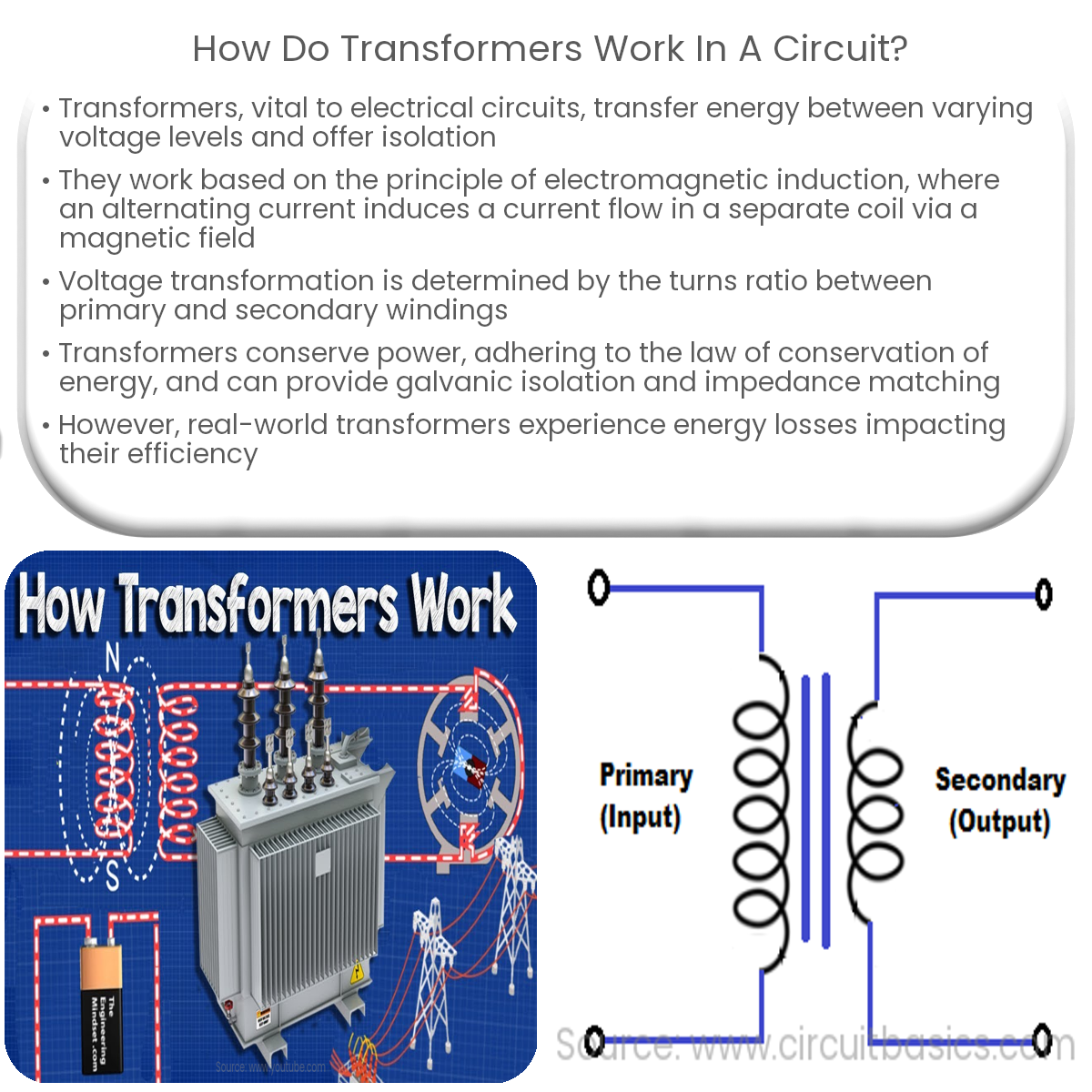Transformers work by using electromagnetic induction to transfer energy between primary and secondary windings, transforming voltage and providing isolation.
Understanding Transformer Operation in a Circuit
Transformers play a crucial role in electrical circuits, transferring energy between different voltage levels and providing isolation. This article explains how transformers work in a circuit.
Basic Principle: Electromagnetic Induction
The operation of a transformer relies on the principle of electromagnetic induction. When an alternating current (AC) flows through a coil of wire (primary winding), it generates a varying magnetic field around the coil. This magnetic field induces an electromotive force (EMF) in a nearby coil (secondary winding), which creates a current flow in the secondary circuit. The energy transfer between the primary and secondary windings occurs through the magnetic field, without direct electrical contact.
Voltage Transformation
The voltage transformation in a transformer is determined by the turns ratio, which is the ratio of the number of turns in the primary winding to the number of turns in the secondary winding. If the secondary winding has more turns than the primary winding, the output voltage will be higher than the input voltage, resulting in a step-up transformer. Conversely, if the secondary winding has fewer turns than the primary winding, the output voltage will be lower, creating a step-down transformer.
Power Conservation
While the voltage and current levels change between the primary and secondary windings, the power remains constant, assuming ideal conditions with no energy loss. This principle is based on the law of conservation of energy, which states that energy cannot be created or destroyed, only converted. In a transformer, the input power (primary voltage x primary current) is equal to the output power (secondary voltage x secondary current).
Isolation and Impedance Matching
Transformers also provide galvanic isolation between the primary and secondary circuits, which can help reduce noise and protect sensitive equipment from voltage spikes or ground loops. Additionally, transformers can be used for impedance matching in circuits, enabling the efficient transfer of power between devices with different impedance levels.
Core Losses and Efficiency
Real-world transformers experience energy losses due to various factors, such as resistance in the windings, eddy currents, and hysteresis in the magnetic core. These losses contribute to reduced efficiency and heat generation. Design considerations, such as the choice of core material and winding techniques, can help minimize these losses and improve transformer performance.
Conclusion
Transformers operate on the principle of electromagnetic induction, transforming voltage levels and providing isolation in a circuit. By understanding the underlying principles and design considerations, you can better appreciate the vital role transformers play in electrical systems.



